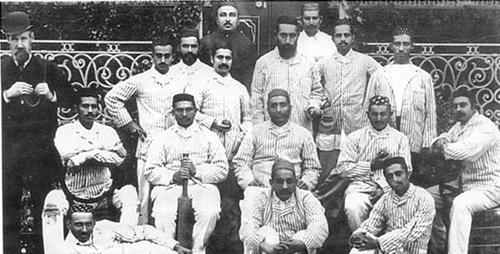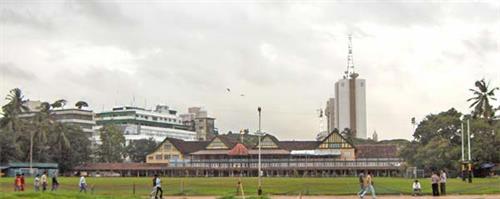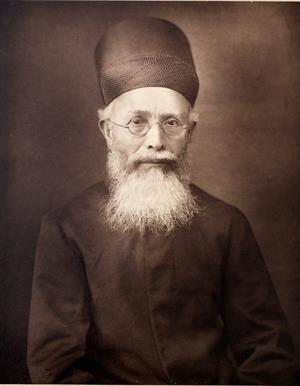
PUMPA - SMART LEARNING
எங்கள் ஆசிரியர்களுடன் 1-ஆன்-1 ஆலோசனை நேரத்தைப் பெறுங்கள். டாப்பர் ஆவதற்கு நாங்கள் பயிற்சி அளிப்போம்
Book Free Demo The origins of Indian cricket are to be found in Bombay and the first Indian community to start playing the game was the small community of Zoroastrians, the Parsis. Brought into close contact with the British because of their interest in trade and the first Indian community to westernise, the Parsis founded the first Indian cricket club, the Oriental Cricket Club, in Bombay in 1848. Parsi clubs were funded and sponsored by Parsi businessmen like the Tatas and the Wadias. The white cricket elite in India offered no help to the enthusiastic Parsis. In fact, there was a quarrel between the Bombay Gymkhana, a whites-only club, and Parsi cricketers over the use of a public park. The Parsis complained that the park was left unfit for cricket because the polo ponies of the Bombay Gymkhana dug up the surface. When it became clear that the colonial authorities were prejudiced in favour of their white compatriots, the Parsis built their own gymkhana to play cricket in. The rivalry between the Parsis and the Bombay Gymkhana had a happy ending for these pioneers of Indian cricket. A Parsi team beat the Bombay Gymkhana at cricket in 1889, just four years after the foundation of the Indian National Congress in 1885, an organisation that was lucky to have amongst its early leaders the great Parsi statesman and intellectual Dadabhai Naoroji.
Explanation:
In India, the East India Company and the British colonisers brought in their game of cricket and the locals were highly influenced by the new game. Until then, India had their own native games like Kabaddi, Ghilli Danda, Kho Kho etc. But the advent of cricket in the main city of Bombay reversed people's take towards games. But Indians were initially sceptical towards the game as it was considered to be the white man's tool to subjugate them. But the first Indian communities to extend their support and partake in cricket where the community who followed Zoroastrianism, the Parsis. The Parsis were immigrants from the modern day Iran, when there was a Muslim conquest in Persia around the \(7th\) century BC. Since they were not natives of India, they easily entered into trade and business with the British. They traded textiles, steel, leather etc. As a result of these trades, they were more westernised in their approach and accepted the white man's game.

The Parsi team that toured England in 1886*
The Parsis found the first cricket club in India called the 'The Oriental Cricket Club' in Bombay in \(1848\). The word Orient means the influence of the West. These clubs helped to establish the games within the country and were sponsored by great Parsi businessmen like the Tatas and Wadias. Although the Parsis embraced their game, the English officials were not ready to offer any support for them. They had their own club in India and did not want the natives to take over them. They had a famous club called the 'Bombay Gymkhana club', which was exclusively only for males. A gymkhana was nothing but a sports club, with which the Parsis had an ongoing debate. The sport arena was used by the white people to train their ponies which were used in the game of Polo. The ponies dug up the ground with their hooves which made it unsuitable for playing cricket.

The Bombay Gymkhana**
The officials of the gymkhana were biased towards the British, which made the Parsis to build their own gymkhana for playing the game. This rivalry ended up in favour of the Parsis, as they won a swooping victory in a match conducted between the teams of Bombay Gymkhana and the new team in \(1889\). This was four years after the formation of the Indian National Congress in \(1885\). Dadabhai Naoroji, who was one of the earliest leaders of the congress, was a Parsi, which gave more strength and support for them.

Dadabhai Naoroji***
Meaning of difficult words:
| S.No | Words | Meaning |
1 | Zoroastrians | The follower of a religion that originated in Persia |
2 | Polo | A sport where teams try to hit a ball on the back of ponies |
3 | Prejudice | A pre conceived notion, judgement without knowing the facts |
4 | Compatriots | A fellow citizen or national |
5 | Elite | Rich and privilege |
6 | Gymkhana | A sports club |
7 | Orient | West |
8 | Enthusiastic | Happy and eager |
9 | Authorities | Higher officials |
National Council of Educational Research and Training (2007). Honeycomb. The Cricket Story- Ramachandra Guha (pp. 139-151). Published at the Publication Division by the Secretary, National Council of Educational Research and Training, Sri Aurobindo Marg, New Delhi.
Reference:
The Parsi team*: Rustom Deboo, Specials - Parsis Pioneers Of Cricket In India, Part 1, The Cricket Cauldron
The Bombay Gymkhana**: Nichalp, CC BY-SA 2.5
Dadabhai Naoroji***: See page for author, Public domain, via Wikimedia Commons